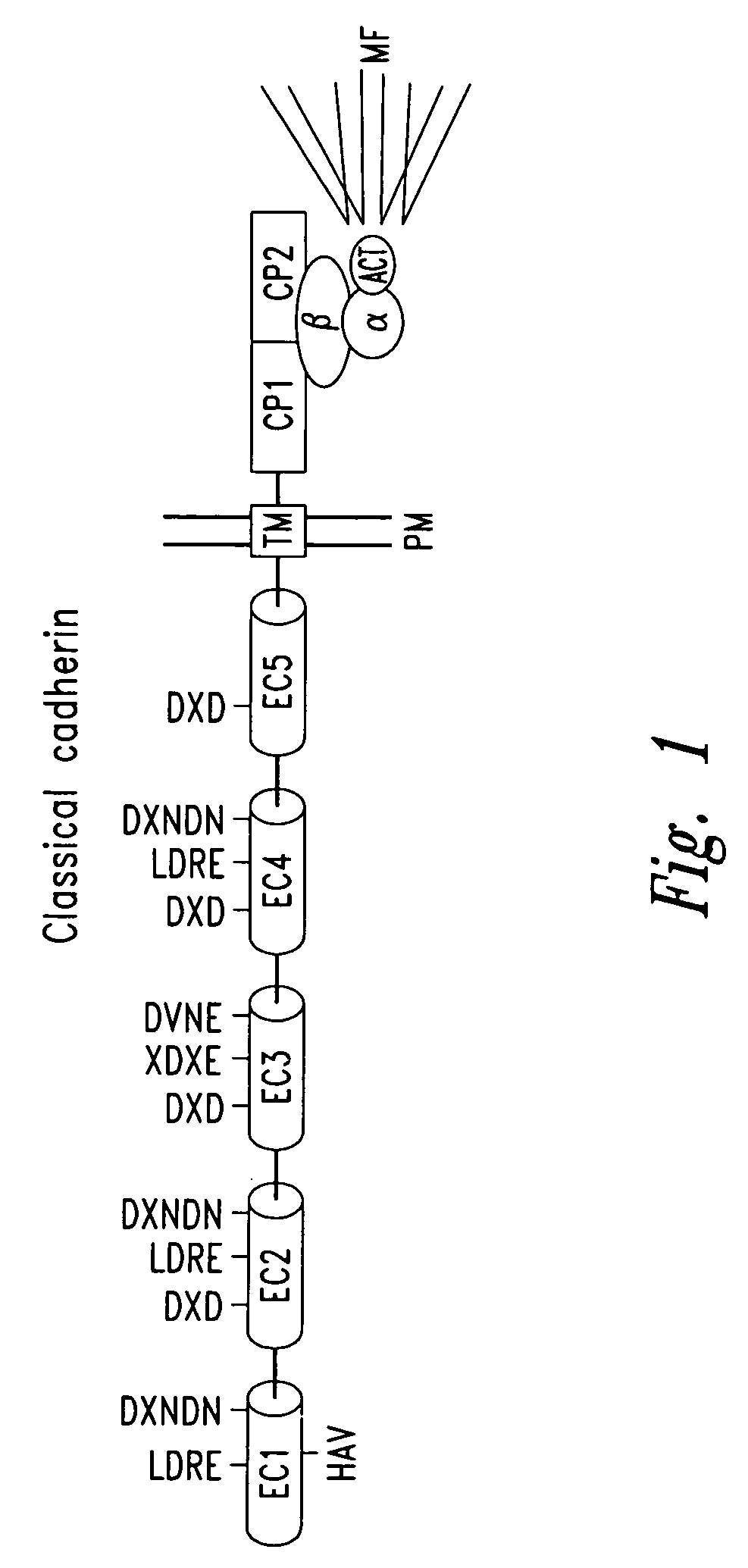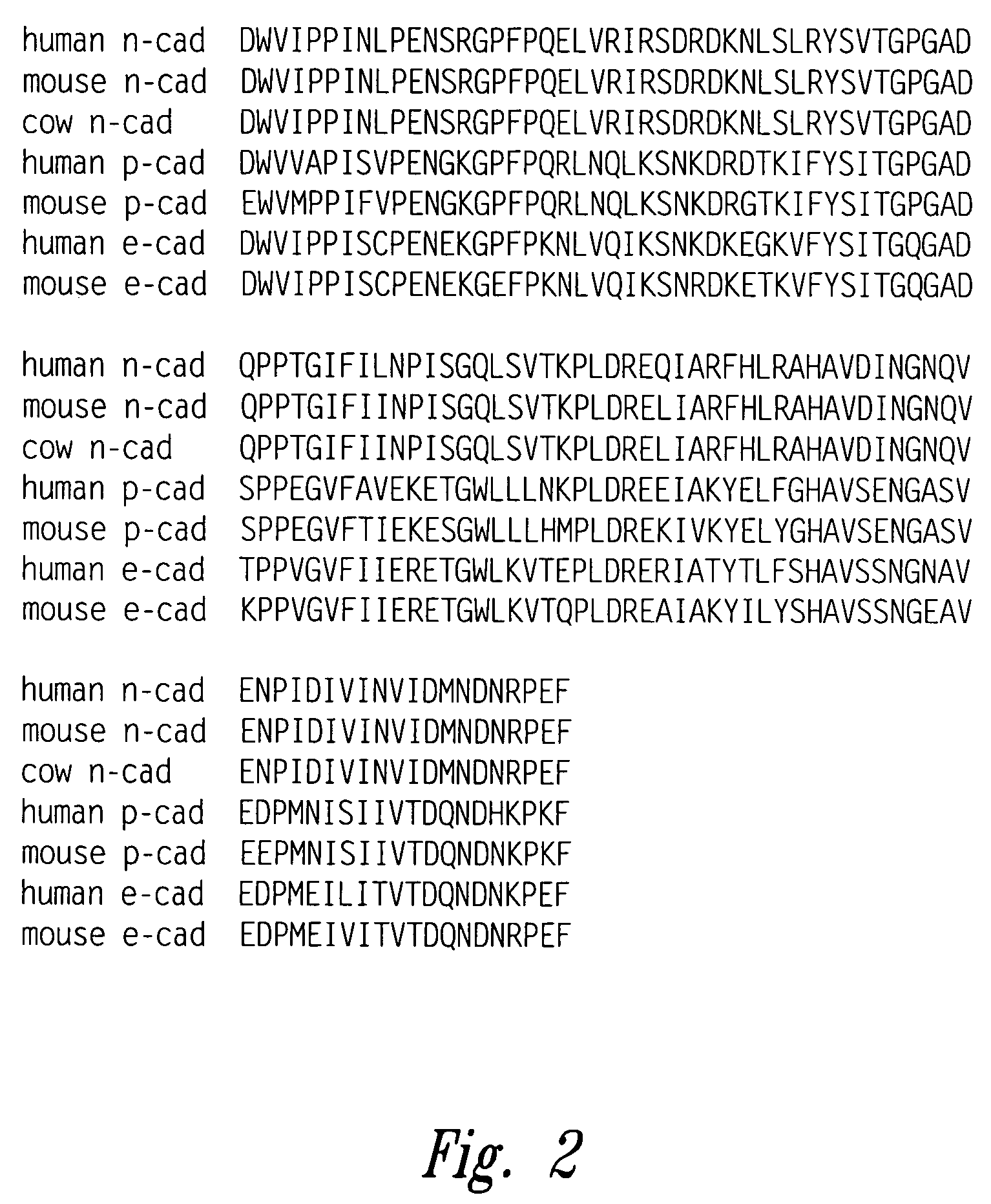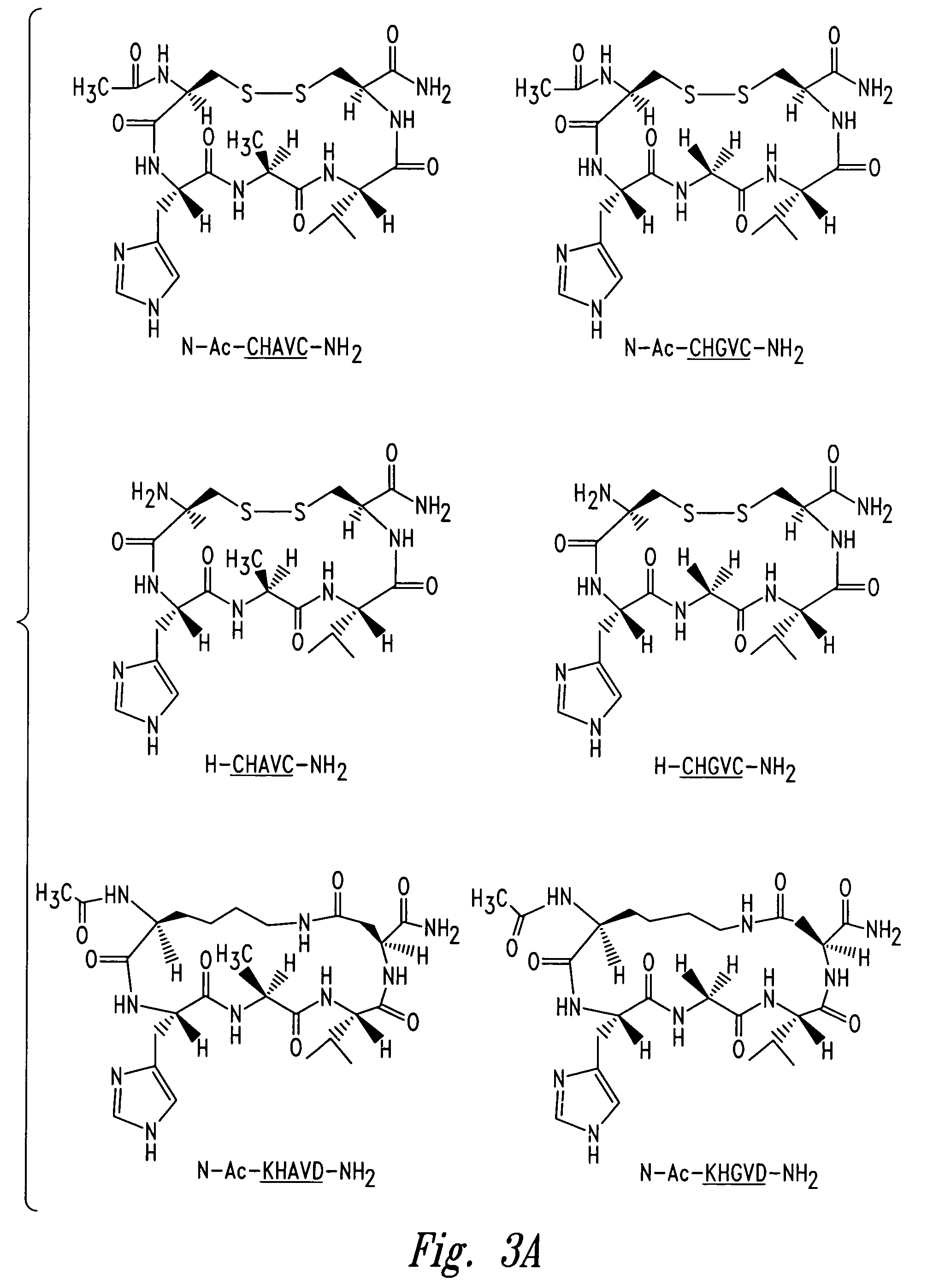Peptidomimetic modulators of cell adhesion
a cell adhesion and peptidomimetics technology, applied in the direction of peptide/protein ingredients, cyclic peptide ingredients, animal/human proteins, etc., can solve the problems of limited use of skin patches, inability to deliver drugs to specific tissues and tumors within the body, undesirable cell adhesion, etc., to inhibit synaptic stability, inhibit or enhance, and increase vasopermeability
- Summary
- Abstract
- Description
- Claims
- Application Information
AI Technical Summary
Benefits of technology
Problems solved by technology
Method used
Image
Examples
example 1
Preparation of Representative Cyclic Peptides
[0248]This Example illustrates the solid phase synthesis of representative cyclic peptides.
[0249]Peptides were generally assembled on methylbenzhydrylamine resin (MBHA resin) for the C-terminal amide peptides. The traditional Merrifield resins were used for any C-terminal acid peptides. Bags of a polypropylene mesh material were filled with the resin and soaked in dichloromethane. The resin packets were washed three times with 5% diisopropylethylamine in dichloromethane and then washed with dichloromethane. The packets are then sorted and placed into a Nalgene bottle containing a solution of the amino acid of interest in dichloromethane. An equal amount of diisopropylcarbodiimide (DIC) in dichloromethane was added to activate the coupling reaction. The bottle was shaken for one hour to ensure completion of the reaction. The reaction mixture was discarded and the packets washed with DMF. The N-α-Boc was removed by acidolysis using a 55% TF...
example 2
Generation of Three-Dimensional Structures of Representative Cyclic Peptides
[0252]This Example illustrates the use of Nuclear Magnetic Resonance techniques to determine the three-dimensional structure of the representative cyclic peptides N—Ac—CHAVC—NH2 (SEQ ID NO:10), N—Ac—CHAVDC—NH2 (SEQ ID NO:20), N—Ac—CHAVC—Y—NH2 (SEQ ID NO:81) and N—Ac—CSHAVC—NH2 (SEQ ID NO:36).
[0253]The 3-dimensional structure of N—Ac—CHAVC—NH2 (SEQ ID NO:10) was determined using Nuclear Magnetic Resonance (NMR) techniques combined with molecular modelling. Experiments were performed using either a Bruker Avance-800 or Bruker Avance-500 NMR spectrometer equipped with pulse field gradient units. NMR data acquisition was carried out in aqueous systems that closely mimic physiological conditions. More specifically, all samples were analyzed in buffer containing 20 mM NaPO4, 0.2 mM EDTA, 150 mM NaCl and 10% D2O, with the pH adjusted to 6.8 both before and after the addition of DMSO-d6. The final volume inside the ...
example 3
Identification of Peptidomimetics
[0262]This Example illustrates the use of cyclic peptide pharmacophores to identify peptidomimetics.
[0263]Certain peptidomimetics were identified based on a visual inspection of the N—Ac—CHAVC—NH2 (SEQ ID NO:10) pharmacophore. From FIGS. 8A and 8B (which compare the that the N—Ac—CHAVC—NH2 (SEQ ID NO:10) pharmacophore with the x-ray crystal structure of the HAV sequence in N-cadherin), it is apparent that the hydrophobic valine could be replaced with unnatural amino acids carrying bulky groups, such as that found in compound 1 (FIG. 11). This is expected to restrict rotation of the amide bonds, and possibly eliminate the need for cyclization. Alternatively the hydrophobic valine residue can be incorporated into a cyclic rigid structure such as that found in compounds 2 and 3 (FIG. 11).
PUM
| Property | Measurement | Unit |
|---|---|---|
| RG | aaaaa | aaaaa |
| pH | aaaaa | aaaaa |
| distances | aaaaa | aaaaa |
Abstract
Description
Claims
Application Information
 Login to View More
Login to View More - R&D
- Intellectual Property
- Life Sciences
- Materials
- Tech Scout
- Unparalleled Data Quality
- Higher Quality Content
- 60% Fewer Hallucinations
Browse by: Latest US Patents, China's latest patents, Technical Efficacy Thesaurus, Application Domain, Technology Topic, Popular Technical Reports.
© 2025 PatSnap. All rights reserved.Legal|Privacy policy|Modern Slavery Act Transparency Statement|Sitemap|About US| Contact US: help@patsnap.com



